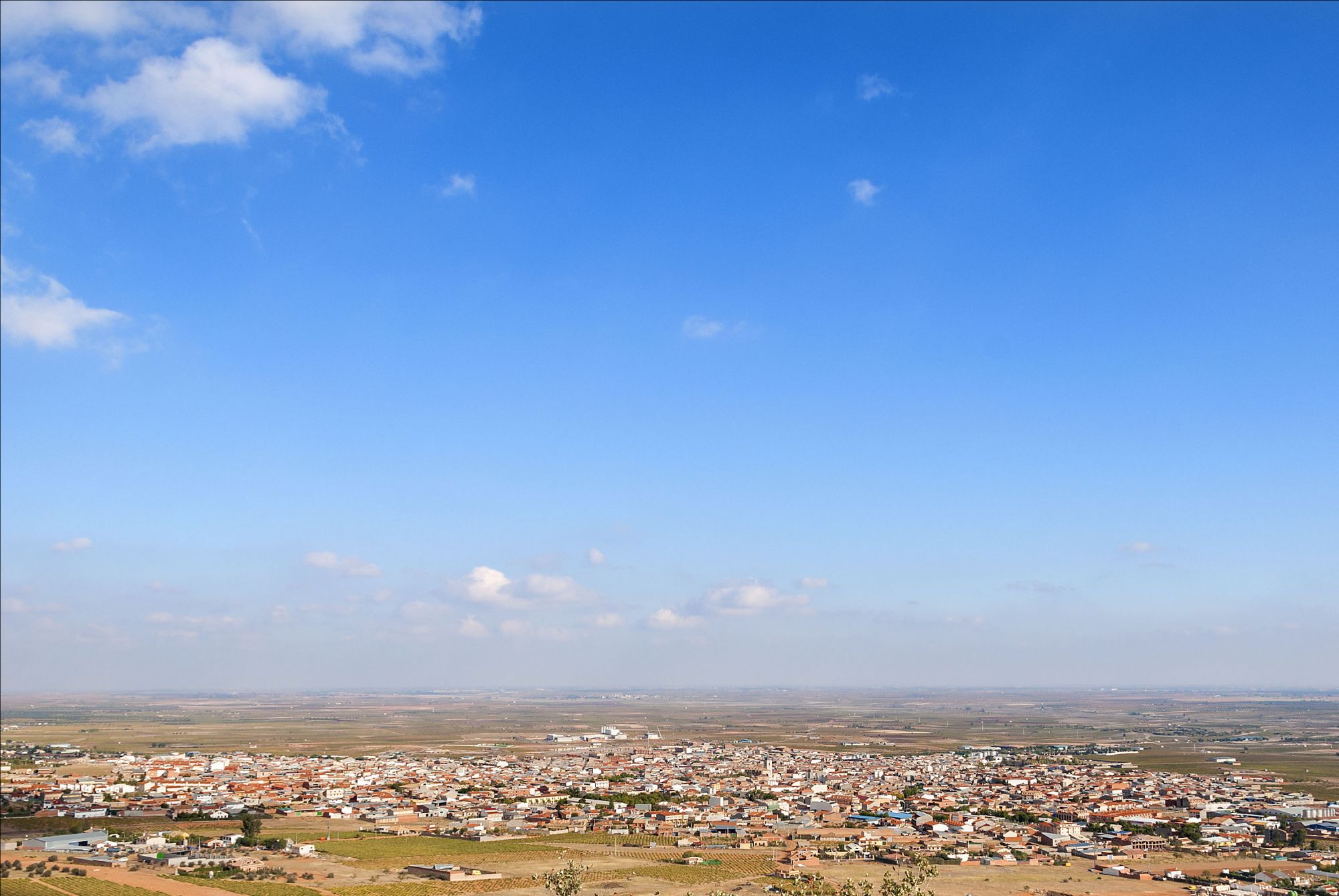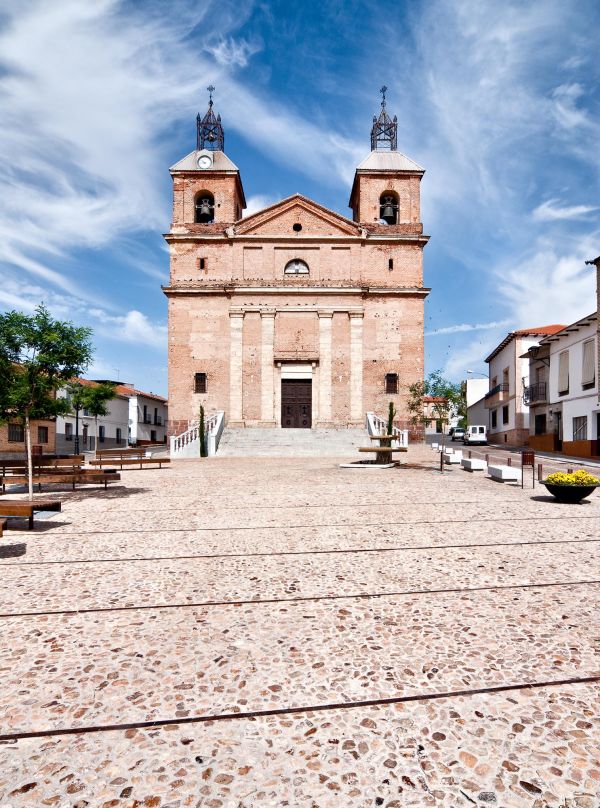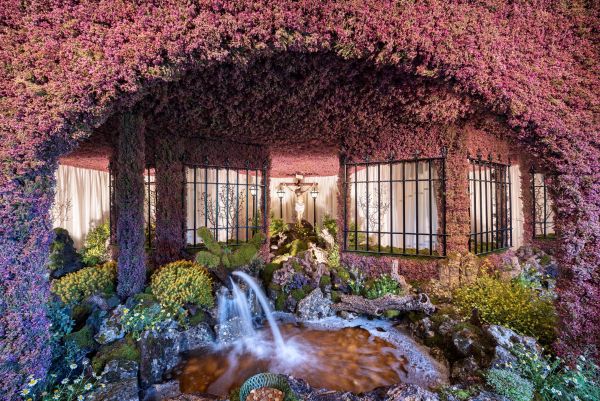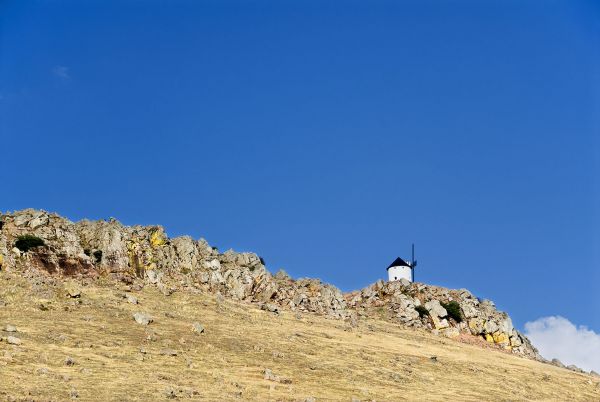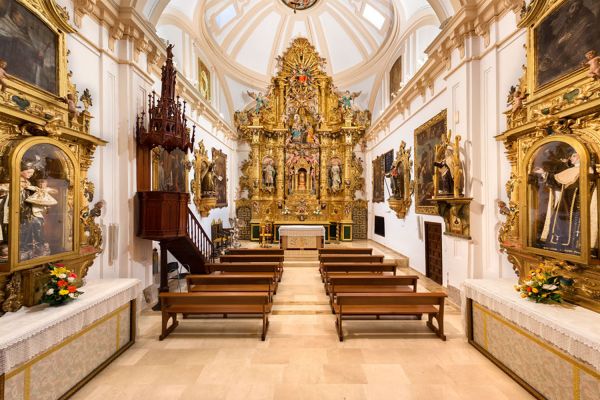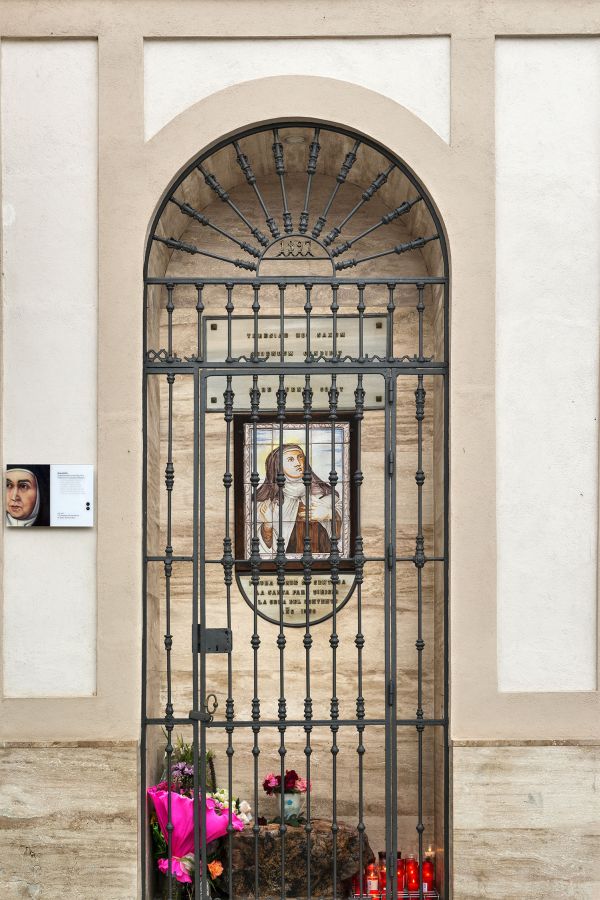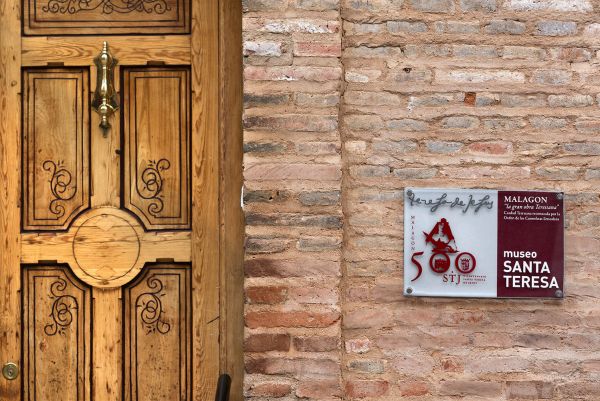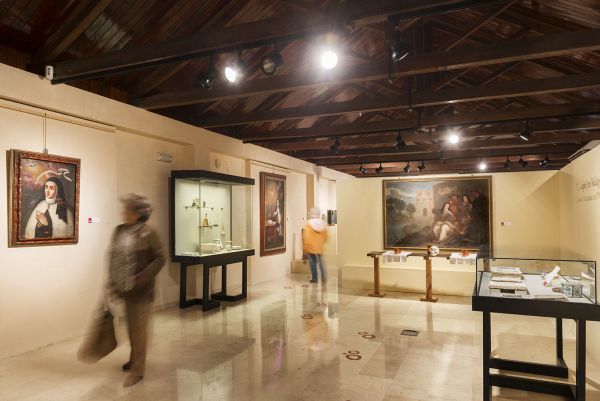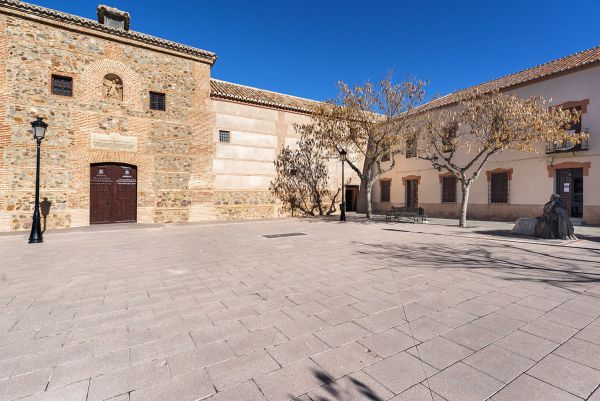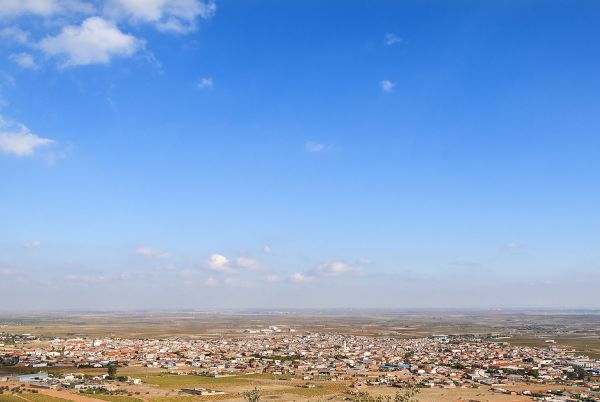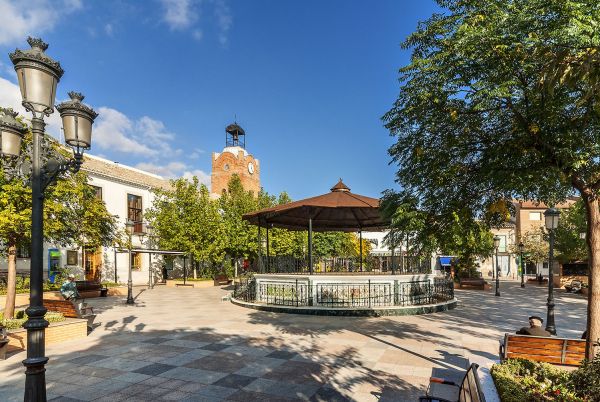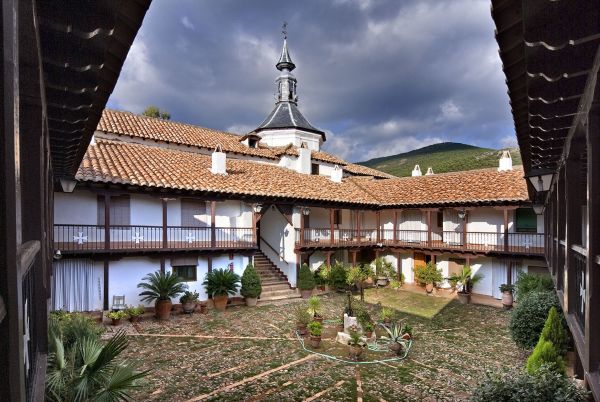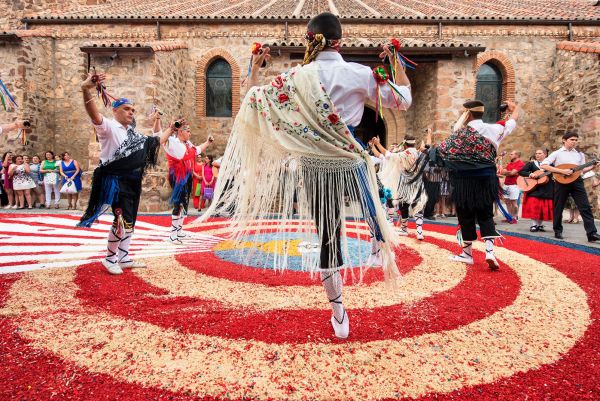The Montes region. From Malagón to Piedrabuena
Ciudad Real
Los Montes region lies between the National Parks of Cabañeros and Las Tablas de Daimiel. This comprises 16 towns, with mountainous scenery giving way to sweeping plains, featuring volcanic expressions with some temporary lagoons, offering visitors impressive contrasts an extensive variety of wildlife and fauna.
Our first stop offers a snapshot of the whole region: the so-called Balcony of La Mancha by Villarrubia de los Ojos, which is probably the best lookout point over the La Mancha plains. It’s nestled atop San Cristóbal hill, next to the chapel of the same name, just 1 km from the town. We can travel there by car or by taking a pleasant stroll (particularly in spring).
In Fuente el Fresno, there is the impressive Santa Quiteria parish church, a beautiful Roman construction with an original round tower.
Travelling west, Malagón, the region’s most populated town, has been inextricably linked to the figure of St. Theresa since the 16th century, when the Monastery of Saint Joseph was founded here, the only one of its 17 monasteries she was able to design and build from the beginning. There is a route that follows in the Saint’s footsteps through the town, which simultaneously reveals the history of the buildings, streets and most iconic sites.
When leaving Malagón, towards Porzuna, we’ll come across Las Navas de Malagón nature reserve: three lakes with volcanic origins, and one of the least known but most interesting places for bird watching. These are seasonal lakes, with highly variable salinity, which gives rise to high levels of biological diversity, its rarity and vulnerability. Nava Grande, the largest of the three lakes, is noteworthy due to its waters and the ring of volcanic tuff surrounding it. A large number of aquatic birds spend winter here, including the white-headed duck, gadwall, red-crested pochard, common pochard, great crested grebe, whiskered tern, northern shoveler, common grebe and the black-necked grebe. The presence of two endangered amphibians is also of particular interest: tree frogs and southern marbled newt.
If you’re interested in bird watching, then nearby there are two towns in the municipality of Malagón, El Cristo del Espíritu Santo and Piedralá, where large birds of prey are regularly sighted, such as the black vulture and the griffon vulture, the Golden eagle and the smooth snake.
The next stop is Porzuna, a town “with a volcano inside”. The stunning Cerro de los Santos volcano, whose foothills provide the town’s setting, is a natural monument born from a single eruption, which spewed lava flows in every direction. You can still see black and sometimes reddish slag on the slopes. You reach the top via several trails offering incredible views of the surrounding area.
Lastly, Piedrabuena, a quiet town with scenery marked by its proximity to the Bullaque river. The river has created places of great beauty, which are not well known: Los Jarales, El Cañal, La Tabla de Las Guarrillas or El Puente Nuevo are spots with a high level of environmental value. There, we will find a wide variety of vegetation based on willows, ashes, white and black poplars, elms, white and yellow water lilies, alders, etc.
Tabla de la Yedra is a highlight, a well-known leisure area in the region, where visitors can enjoy nature, rest, swimming or fishing. It’s around 2.5 km from the town and you can go walking (signposted) or by car. If we’re lucky, we might see otters, birds such as kingfishers, capped herons, grebes or even hedgehogs and foxes.
For hikers, from Piedrabuena the PR-CR 26 road to the Arzollosa volcano begins, noteworthy for being the volcano with the largest surface area and the one to produce the most lava in the whole Campo de Calatrava volcanic region.
Two festivals declared of regional tourist interest in this region.
The Corpus de Porzuna is characterised by the dancers and salt and sawdust carpets.
The festival of Cruces y Mayos de Piedrabuena is a deep-seated tradition involving a lot of work and dedication, offering an eye-catching spectacle packed with meaning.
May also be of interest to you
Castilla-La Mancha Tourism in 2023. All rights reserved.
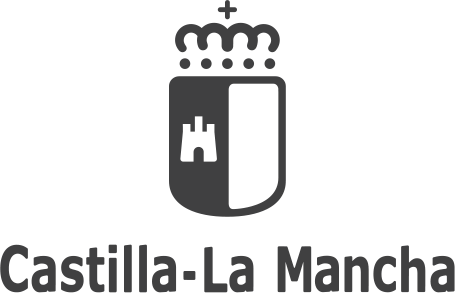
 365
365
